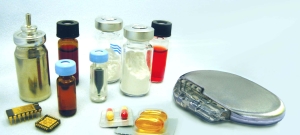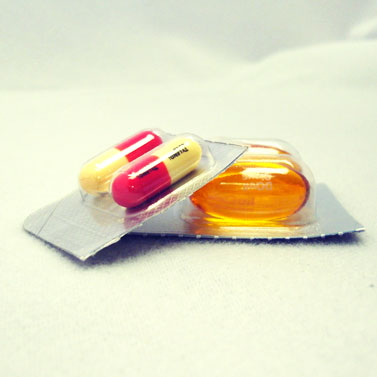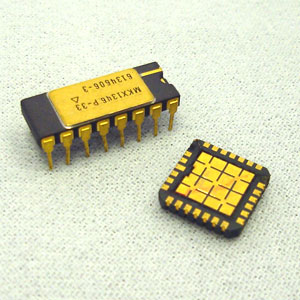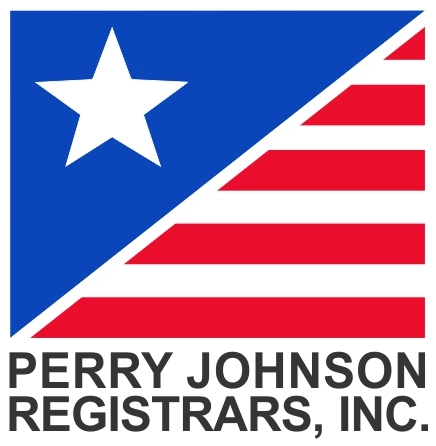IVA® (Internal Vapor Analysis)
Specialized Applications in Qualitative and Quantitative Low Molecular Weight Gas Mass Spectrometry of Hermetic Packages
Oneida Research Services, Inc. (ORS) specializes in Internal Vapor Analysis (IVA®) services to quantitatively measure the primary and trace gases inside hermetic components. The gas content inside sealed components, particularly moisture concentration, can cause long term reliability problems such as corrosion, fogging, leakage, current bit errors and lubrication issues. Known to some as Residual Gas Analysis (RGA) testing or “MIL STD 1018”, the test measures the primary sealing gases and trace gases. It is ideally suited for process development, sealing quality control, studying long term out-gassing of the enclosed materials inside the components, and for product qualification.
Headspace Gas Analysis for Medical and Pharmaceutical Products
IVA testing is extremely well suited for measuring primary and trace gases inside medical devices and pharmaceutical packages. This type of Headspace Gas Analysis is essential for ensuring the long-term viability of implantable medical devices like pacemakers and cochlear implants as well as pharmaceutical vials, bags, pouches and foil packages.
 When it comes to testing sealed gas enclosures, no other testing facility can outperform the precision of ORS Labs. Thanks to our advanced equipment and methodologies, we’re able to measure sample cavity volumes as small as 1 nL and get results back to you the very next day. Our equipment accurately measures even the most trace amounts of Hydrogen, Helium, Nitrogen, Oxygen, Carbon Dioxide, Argon, moisture, solvents and other substances.
When it comes to testing sealed gas enclosures, no other testing facility can outperform the precision of ORS Labs. Thanks to our advanced equipment and methodologies, we’re able to measure sample cavity volumes as small as 1 nL and get results back to you the very next day. Our equipment accurately measures even the most trace amounts of Hydrogen, Helium, Nitrogen, Oxygen, Carbon Dioxide, Argon, moisture, solvents and other substances.
Complete the form below to request more information.
Applications include a wide range of industries such as Microelectronics, Large Hermetic Modules, Metals, Ceramics, Telecommunications, Food, Medical Devices, Pharmaceutical Packaging and Illumination.
IVA® has been a core technology of ORS for 45 years. We have Suitability status from the DLA Land and Maritime (DLA) for qualifying military devices according to MIL STD 883/750 Method 1018. For commercial applications, we conduct the test per our Commercial Practice Test Method MEL-1053. Our DLA Suitability status is intended for the qualification of military devices and we are prohibited from changing any test parameters described within the method. However, there are many instances where the test parameters used for military applications is inappropriate for commercial product or process development studies (e.g., sample test temperature and sample pre-bake requirements).
Our Commercial Practice Test Method MEL-1053 exceeds the instrument and calibration requirements of the Military Standards. The ORS commercial practice test method represents best practices for R&D and process monitoring applications.
ORS has also been the leader in HR-IVA®. The High Resolution Time-of-Flight mass spectrometer system is used for measuring samples with an internal free volume cavity as small as 1nL (1×10-6cc).
Request an IVA® Demo or Follow-Up Call
Our IVA® system offers the most accurate and reproducible data in the industry. Let us show you how easy it is!
IVA® vs. HR-IVA®
| Specification | Internal Vapor Analysis (IVA®) | High Resolution Internal Vapor Analysis (HR-IVA®) |
| Volume Range | >0.01cc – Infinite volume | 1 nL – Infinite volume |
| DLA Suitable Range | >0.01cc – Infinite volume | 0.0003cc – Infinite volume (300 nL) |
| Mass Range | 2-512 amu | 2-500 amu |
| Acquisition Speed | ~2ms/mass | 10us/scan |
| Resolution | 1amu | 1/1000 amu |
Both systems were designed and manufactured by ORS. Please view our IVA® & Leak Test Equipment web page for more information on acquiring this technology for use in your facility.
In parallel with Internal Vapor Analysis, ORS offers additional analytical techniques for the qualification and process development of polymers, epoxies, coatings, and adhesives used in passive or active components. Outgassing of solvents, extenders, or reaction by-products and their deposition on critical surfaces can be a reliability concern. Residual outgassing products can be monitored and quantified by the following methods: Internal Vapor Analysis, Static Headspace Analysis by GC/MS, and Ampoule Analysis.
See also: Material Outgassing Studies and Organic Mass Spectrometry
ORS Test Methods
MEL-1018: Internal Water Vapor Content – DLA Suitability for Military Devices
This test procedure is used exclusively for testing hermetic devices in accordance with MIL STD 883 or 750, method 1018, procedure 1 per the conditions of “Suitability” status granted by DLA Land and Maritime (DLA). No variations are permitted to this procedure or to the device test conditions. Furthermore, all tests performed per this procedure are subject to inclusion in the annual retention report to DLA and all records regarding these tests are subject to audit and inspection by the U.S. Government.
- New York Office: Suitability Letter
- Colorado Office: Suitability Letter
- European Headquarters: Suitability Letter
MEL-1053: Internal Vapor Analysis – Commercial Practice
This test procedure is used for testing hermetic devices in accordance with ORS’s Commercial Practice for Internal Vapor Analysis. This test method extends the scope and capabilities of traditional MIL STD 883/750, method 1018 analysis. It permits variations to the procedure and/or device test conditions to achieve the best test conditions for specific client applications. Client specific protocols may be established for maximum accuracy and sensitivity for product monitoring applications, process development, R&D, materials evaluations and failure analysis projects. The data is not subject to inclusion in the annual retention report to DLA and all records regarding these tests are confidential.
MEL-1070: Gas Cylinder Analysis of Sealing Chamber Atmospheres
This test method quantitatively measures the process sealing gases sampled from sealing chambers and/or gas supply lines using a specially prepared sampling cylinder. Sampling procedures are described in the instructions provided with the sampling cylinders. Contact ORS for availability and rental of sampling cylinders.
MEL-1080: Identification of UNKNOWN volatile and semi-volatile organic compounds by IVA®/GC/MS
This test method is used to identify unknown organic compounds that may be detected by IVA® test methods but may not be conclusively identified due to the complexity or trace quantity of the mass spectra. Standard hermetic devices, gas cylinders or individual materials sealed in glass ampules may be analyzed. The technique is useful to understand the trace contaminants, chemical processes of material outgassing and chemical reactions from environmental stress for:
Possible Test Samples
- Microelectronic components and multi-chip modules
- Fiber-optic devices and sensors
- Light bulbs, lamps and ampules
- Pacemakers, cochlear implants and other medical devices
- Pharmaceutical bags and pouches
- Vials containing bulk material in a dry nitrogen atmosphere
- Voids and blisters in processed metals
- Lyophilized drugs and pharmaceutical blister packages
- Syringes containing extracted gasses
- Large-scale electronic devices and units
- Gas Collection Bottles and Cylinders (see gas cylinder rental agreement)
- Ceramics and plastics
- Aerosols
- Mylar bags and other hermetic packaging
- MEMS devices
- Epoxies, polymers, coatings and adhesives
- Lithium-ion battery outgassing
- Food packaging headspace
- Vacuum sealed devices
The Test Conditions
- Time/temperature preconditioning
- Variable test temperature
- Adjustable AMU scan range and speed
- Variable data acquisition time
- Flexibility in sample puncture location
IVA® and HR-IVA®Test Capabilities
A versatile set of test capabilities allows us to accommodate a wide variety of samples. This versatility alone makes Gas Analysis a unique problem-solving tool in any environment. ORS test capabilities include:
- The ability to test samples with an internal volume of 1nL (1×10-6cc) and up
- An accuracy of less than ±5%
- A sensitivity of 10 ppmv or better
- An applied Atomic Mass Unit (AMU) range of 1 to 512
- Access to a Mass Spectrometer Data Base with over 140,000 spectra available to assist in the identification of unknown compounds
- Flexibility in sample holding temperature during analysis
- Flexibility in test protocol
The Format of IVA®Results
- Qualitative results
- Quantitative results
- Spectra report (AMU vs. Intensity)
- ID of unknowns through the NIST Mass Spectrometry Database
- Pumpout curves for all gasses identified
GC/MS Test Capabilities
- PPB range sensitivity
- Typical amu range 35-550. Instrument capability of 1.6 to 1050 amu
- Customized instrument temperature programs
- Scan, SIM (Select Ion Monitoring), and synchronous SIM/Scan capability
- Negative EI (electron impact)
- Flexibility in sample holding temperature during analysis
- Flexibility in sample pre-bake times
- Flexibility in test protocol
The Format of GC/MS IVA® Results
- Semi-quantitative results
- Discussion and summary of analysis
- Tentatively Identified Compounds (TIC) summary page using NIST’11 Mass Spectral Database (>243,000 spectra)
- Estimated concentrations and Chemical Abstract Services (CAS) #’s
- Chromatograms and overlays of chromatograms and control samples highlighting areas of interest
- Individual peak mass spectra available
- Customized report formats available. Call to discuss options.
Gas Analysis Services Customized to Fit Your Needs
Our experienced technical and sales staff will be happy to discuss your specific application in detail with you and recommend a test plan that will fit your individual needs. To submit samples for gas analysis, simply print out our IVA® Sample Submission Form, enter in the appropriate information and mail the samples and submission form to ORS.






